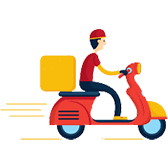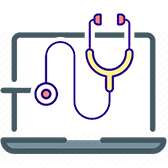
The time we can spend processing, encoding, storing, and retrieving information is constrained by the average person's attention span, which is approximately ten minutes.
Students' notes are less successful when they attempt to take notes while paying attention to the teacher and engaging in non-academic activities like checking Facebook, responding to texts, and responding to emails.
Problems with multitasking and diversions in gadgets are the main points of contention against using laptops, tablets, smartphones, and other devices in the classroom. If not all pupils can access the most recent technology, it becomes an equity issue.
However, the debate over whether or not to utilize electronic devices for taking notes might already be lost, and the issue is not one of "either/or." It is not a solid case for forbidding technology because teachers are uncomfortable using it productively.
For teachers to use technology effectively, they must acquire new abilities. Teachers and students should select the most suitable note-taking method for each job, whether handwritten or computerized. Here are six suggestions for taking notes on electronic devices more efficiently.
Tip 1: How we take notes is influenced by our memory
For better electronic note-taking, it's crucial to comprehend attention span and working memory capacity. Working memory is temporarily storing and handling small bits of information.
According to research, there are significant individual variations in working memory ability.
People can transcribe far more content by typing notes than by writing them by hand because typing is faster than handwriting. Sometimes, copying letters initially and processing them later for students who struggle with working memory is simpler.
Students can take more notes since they don't have to split their attention as much between the several cognitive processes required to listen, type, synthesize, and absorb information simultaneously. However, this method only functions if students revisit and reprocess their notes within a 24-hour, 7-day, and 30-day window.
Even when using electronic notes, a learner must repeatedly review and interact with their notes as part of active learning activities like:
• "Chunking" a lot of information into larger groups that are easier for you to recall.
• Write down the main ideas in your own words.
• Including pertinent questions in the notes to help readers remember the essential ideas
• Creating a note-summarizing document.
• Examining the actual educational process - Where did you face opposition? How did you deal with issues?

Tip 2: Laptops are required for tasks involving structured learning.
The explicit use of digital tools in structured, active learning tasks needs to be taught to students. Structured tasks make use of the lesson's integrated technologies. For instance, when a new concept, like climate change, is introduced, have groups use laptops to look up a variety of alternative research findings. Then, have the groups summarise and compare their results to the class.
Tip 3: Distribute responsibility while utilizing electronics.
When deciding whether or not to allow students to use electronic devices in class, teachers should consult with the students. Discuss the advantages and disadvantages of taking notes by hand versus electronic messages. Students and teachers might agree on a contract regarding how technology will be used in class.
New software and app note-taking capabilities are routinely developed on laptops and other portable devices. Assign students to investigate various apps and discuss their benefits and drawbacks, eventually compiling a database of what is available for all.
Also Read:

Tip 4: Begin with simple tools.
Students can annotate and add questions for a self-test to their notes by using the track changes feature in any word-processing tool. As it promotes the exchange of messages across study groups, word-processing documents can be handy for the four stages of note-taking (note taking, note taking, note interacting, and message reflecting).
Notes can be readily created, saved, and shared on many different programs and apps. Students can receive guided messages through email or a QR Code. Throughout a class and in the following lessons, teachers should allow students to pause and consider their notes.

Tip 5: Use electronic gadgets along with handwritten notes
Handwritten notes can be merged electronically using a stylus for activities like formulas and diagrams. On the electronic device, handwritten notes also become searchable. Software is also available for non-linear note-taking techniques like mind mapping.
In the following example, a student added a photo and crucial questions after taking notes on his iPad. He will go over it once more and add a summary later.
The learner uses a variety of digital notebooks that are kept in the cloud and are accessible at any time from anywhere around the globe. In one instance, he referenced and copied a lesson plan and online video from the internet into his notes. The various colors show his later annotations to the notes. Then, using any program that permits PDF annotation, including Notability, iAnnotate, PDFPen, Evernote, and Professional Adobe Acrobat, he saves the messages to Dropbox or Google Drive and shares them with others for their additional annotations.
Conclusion
I won't say much, as the blog has informed you about taking notes on a laptop.
It is an easy process, and you can use it for various purposes.
Frequently Asked Questions
Popular Services
- MacBook Battery Replacement Cost
- HP Printer Repair in Delhi NCR
- Dell Laptop Repair
- HP Laptop Repair
- Samsung Laptop Repair
- Lenovo Laptop Repair
- MacBook Repair
- Acer Laptop Repair
- Sony Vaio Laptop Repair
- Microsoft Surface Repair
- Asus Laptop Repair
- MSI Laptop Repair
- Fujitsu Laptop Repair
- Toshiba Laptop Repair
- HP Printer Repair Pune
- Microsoft Surface Battery Replacement
- Microsoft Surface Screen Replacement




